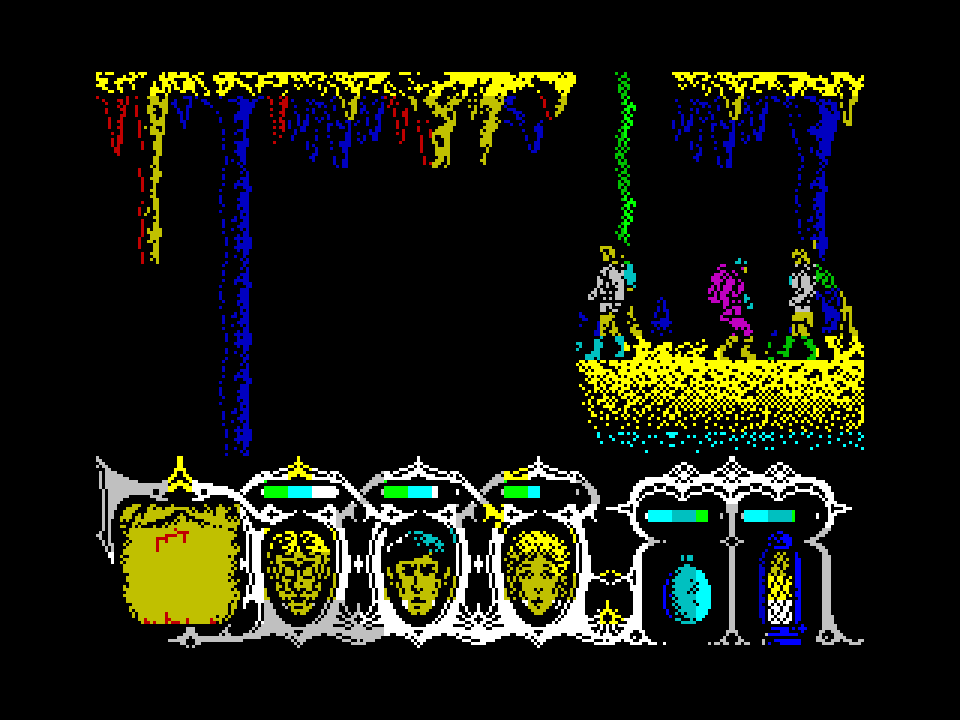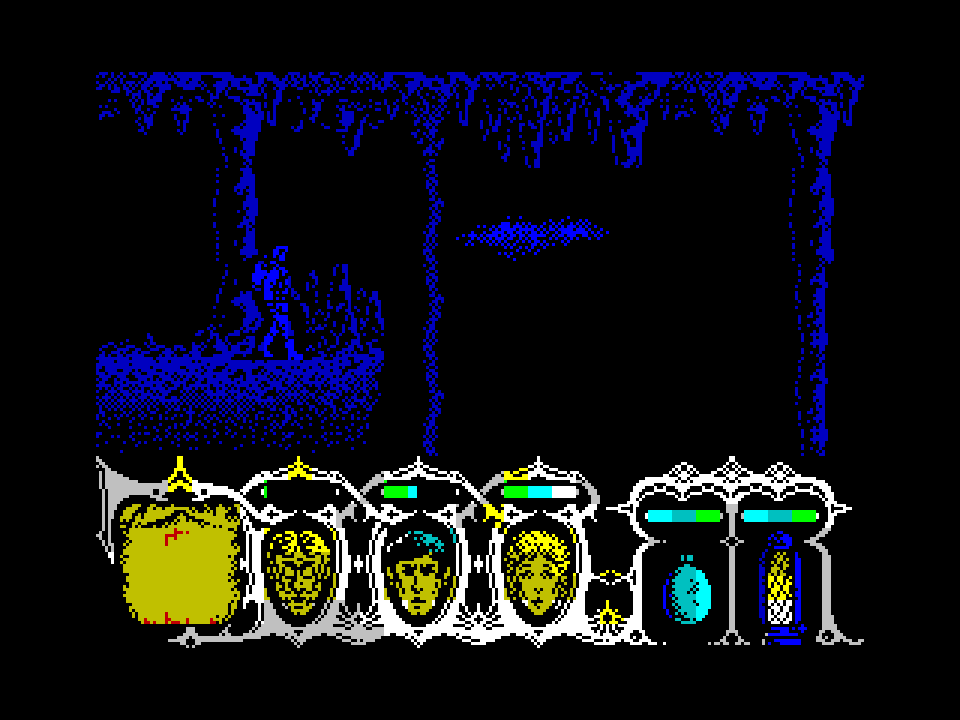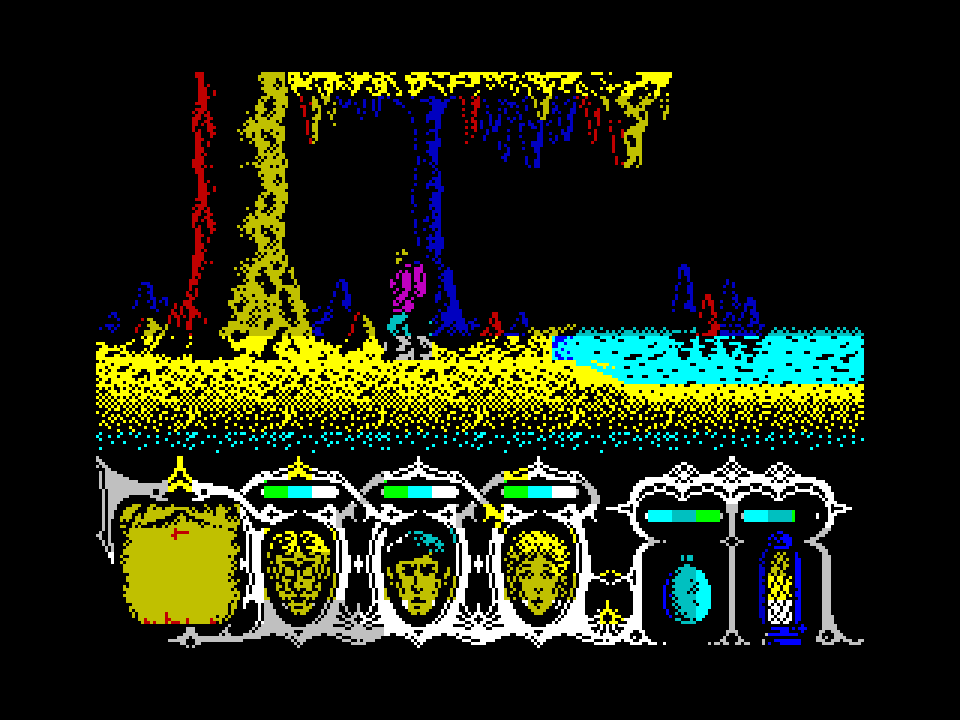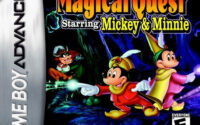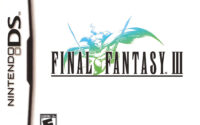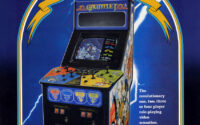Viaje Al Centro De La Tierra Review
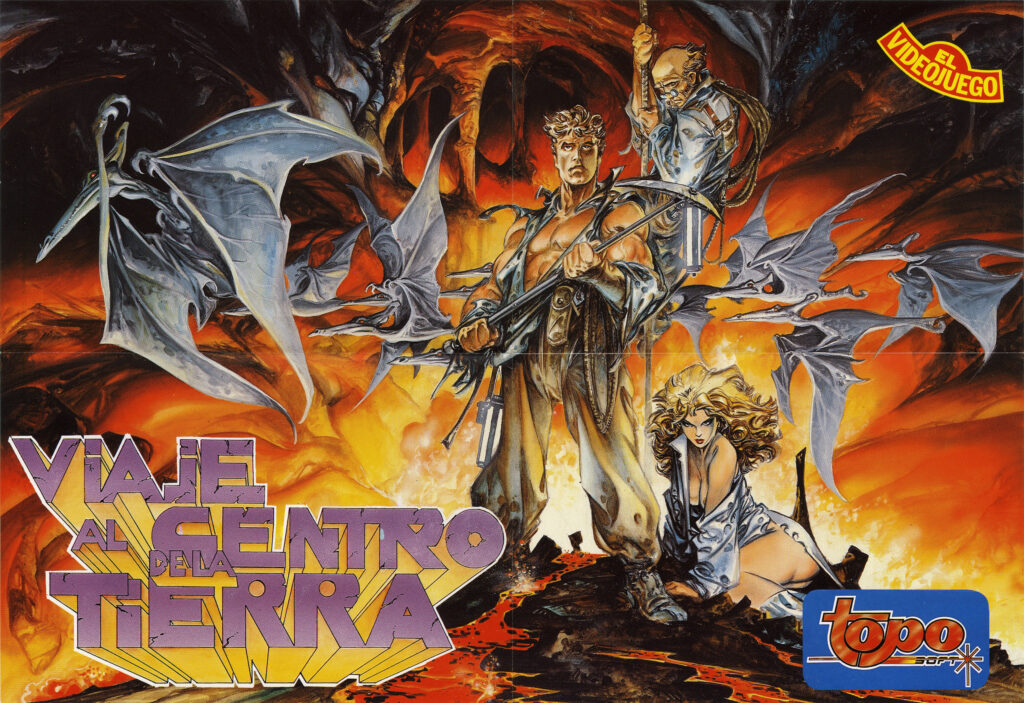
Ain’t that about time, then…?! Some classic Jules Verne as a video game…! (And I hope you have that Spanish dictionary ready… Unless you speak Spanish, obviously.)
STORY
“Journey To The Center Of The Earth” would be the more well known title of the novel, motion picture, etc. And the video game. This multi-part arcade adventure was never translated into English, but luckily, there aren’t that many words that you need to know or translate – The combined language of “transport tile”-puzzle- and platform games is pretty universal.
THE GAME
We might as well get that out of the way at once – The title screen has four options: 1. Teclado, 2. Redefine Teclas, 3. Fase, and 0. Comenza A Jugar. If “Teclas” stands for “keys”, and “Jugar” stands for “playing”, things should instantly become a bit more clear. The first option also includes “Stick Sinclair”, “Stick Kempston”, and “Cursores”. “Fase” lets you begin on any of the game’s three sections, and for the second and third one, you need a code. (Which are: “EVAMARIASEFUE” and “LOU REED” respectively. These are typed in before the section begins.)
Viaje Al Centro De La Tierra is quite logically based on the novel, and it begins with a little cut-scene. Professor Lidenbrock exits a library with a book and heads home over a small handful of lovely London backdrops. At home, he begins to read and accidentally discovers a parchment between the pages of the book. The parchment is a certain map. After you get a quick glimpse of the complete map, you have to do some tile-puzzling action with eleven movable pieces over a 4×3 grid. You simply need to piece together the image from the randomly placed tiles before time runs out. (Time is illustrated with a neat hourglass in the upper right corner of the screen.)
This is merely the intro, as the “real game” starts in “Fase 2″…
CONTENT
Lidenbrock, his daughter Graüben, and Lidenbrock’s nephew Axel suddenly find themselves at the top of a maze-like volcano. When you take control of the trio, they have just climbed down the first rope into the underground. The goal is to get out of the volcano alive at the bottom of the 100+ flip-screens big map. And there are two possible routes that the gang can take. To move deeper and deeper down into the volcano, Lidenbrock and company have to rely on jumping or climbing down strategically tied ropes here and there. (I guess tying the ropes would have made the game pretty frustrating and increasingly boring.)
The characters all have their pros and cons. Axel is the muscle and the athlete of the group. And since he is the strongest, he doesn’t get injured as easily when jumping around through the rocky surroundings. (Leaping blindly off the edge of a cliff becomes necessary every now and then, so there’s a whole lot of trial and error going on at first.) Axel is probably the dude that’s most suited to lead the group from point A to B. Even falling short distances and missing ropes causes more or less severe injuries. (In the form of sprained / broken ankles and such, I guess.)
Professor Lidenbrock is the brain of the expedition. Due to his age, he loses energy faster than the other two much younger members, and he can’t jump as far as Alex. But the Professor has two important assets – A gun and a backpack. A gun is a very good thing to have when facing the various unknown and dangerous creatures.
And finally, Graüben carries the canteen that provides energy for the group. It can be refilled at the lakes that are found here and there. (Only in the underground can water be this refreshing.) Graüben isn’t particularly strong either, but without her, the expedition is practically doomed.
In the darkness, another useful item is the lantern. A lantern run on gas and lights up the surroundings, but it can also easily go out if it’s hit by, e.g., water from geysers. Other dangers include clouds of inflammable gas, blood-thirsty bats, poisonous spiders, collapsing bridges, and lava. Etc. And what would a subterranean journey be without at least one tentacled lake monster?
On the lower third of the screen, you have a good-looking panel with an auto-map on a piece of parchment. This is filled in as you progress through the screens, and it fortunately doesn’t reset with every Game Over. (Making it easier to choose the right path after a series of lethal misadventures.) On the right side of the map are the three character portraits and their Power-bars. The canteen and the lantern also have their separate on-screen bars for water and gas respectively.
If you manage to exit the volcano, you have the third and final section where the group has to pass through the “Phase Of The Monsters” – Complete with quicksand and shit. This level is a flip-screen jungle, and the monsters in question are of the pre-historic kind. Four different types will try to make your journey even more miserable: Tyrannosaurus Rex, Stegosaurus, Smilodon, and Pterodactyl. All of them will attack you in different ways, but the T-Rex is the deadliest. However, this doesn’t mean that you want to get tail-whipped by a Stegosaurus either. The strategy is to let Axel and Lidenbrock do the spear-fighting while Graüben takes care of potential injuries.
In this section, the progress is visualized as three horizontal lines (One for each character.) in the lower right corner. Each line has a colored triangle – Lidenbrock’s is yellow triangle while Axel’s is magenta-colored and Graüben’s is red. Indicators on the lines show how far each character has left to travel. And just like in the previous section, there are character portraits at the bottom of the screen with a vertical Power-bar and the corresponding colored triangle.
CONTROLS
As mentioned, there are four options. And keys can be re-defined. In the puzzle-section, you move a a hand holding a pen. The pen “draws” the map as the Fire-button moves a piece in the (one) possible direction, i.e., if there is a hole in the grid beneath the piece that you click on, the tile will move down… Yeah, it’s just like a “15-puzzle” but with eleven pieces.
In the volcano section, you walk left and right, and jump diagonally upwards. To grab hold of the rope in the middle of a jump, you have to press down. Pressing down while standing ducks. “N” gets energy from the canteen, and “M” turns the lantern on and off. Keys 1-3 switches between the characters.
And in the jungle, up is for walking up (Or “into” the screen.) where it’s possible to do choose between paths. Pressing down is for ducking, and Space attacks with the spear.
GRAPHICS
Amazingly varied throughout… Everything is nicely defined, animated, and designed. This game was clearly a passion project and an obvious shitload of work went into every little visual detail. Somehow, the developers managed to make a Spectrum-game look more colorful than what we usually have seen through the ages. (This applies to the volcano-section.) Some color-clashing is always unavoidable, but it’s no big deal when the interiors of the Earth can look this good…!
SOUND
Some minimalistic and avant-gardistic rendition of almost-Bach on the title screen… And some subtle sound effects…
SUMMARY
As an arcade adventure, Viaje Al Centro De La Tierra holds up thanks to its appealing visuals, good controls, and frequently challenging gameplay. You may not ever want to solve tile puzzle-games in a game like this, but the first section can easily be skipped with a simple code. And once you have found a good strategy (And learned how to climb the ropes to begin with!), it’s not impossible to want to keep exploring that atmospheric volcano and what lies beyond.
Note: The game was re-released as late as in 2007 by Topo Siglo XXI in a “Version Extendida”, which includes the fourth and fifth level that originally appeared in the 16-bit versions only. (Personally, I don’t know how much these sections improve the game, but it’s usually nice to have more of a game than less…)
Developed by: Rafael Gomez, Alfonso Fernandez, ACE, T.P.M. and Antonio Moya.
Published by: Topo Soft
Version Reviewed: ZX Spectrum 48K
Genre: Adventure
Players: 1
Alternate Title: Journey To The Center Of The Earth
Also Available On: Amstrad CPC, MSX
Released: 1989

